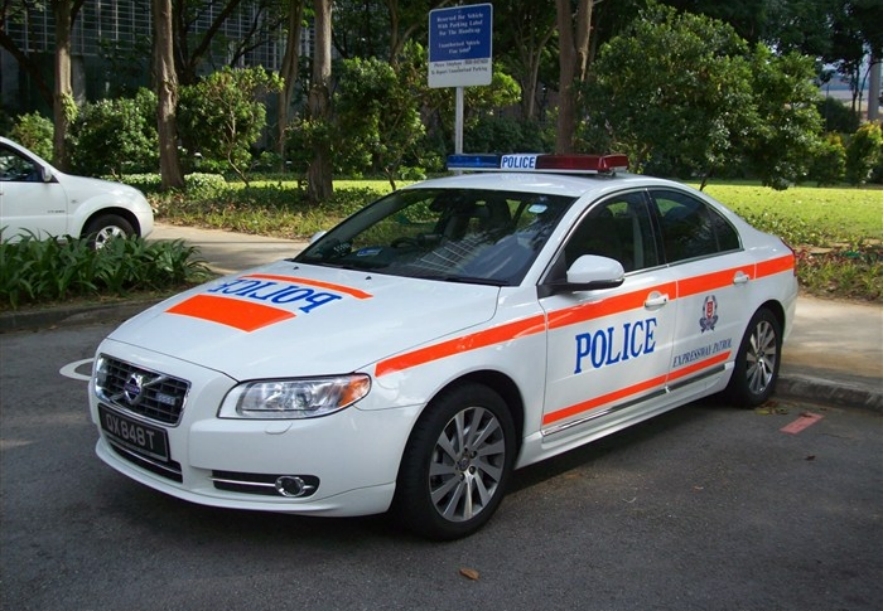
Recently, according to technology news media reports, the Singapore police plan to put 19 modified Polestar 2 electric patrol vehicles into the ranks of highway law enforcement, which marks a new chapter in the electrification of law enforcement equipment in Singapore. However, from a technical point of view, the conversion technology, system integration, energy consumption and security aspects involved in this transformation process still expose a series of concerns, especially in terms of performance and long-term viability of the potential risks.
First of all, the modified Polestar 2 has the ability to break 100 in 4.5 seconds in acceleration performance, which is a significant improvement over the acceleration performance of the current Volvo S80, and can theoretically provide more efficient emergency response capabilities for traffic police. However, this increase in performance does not mean that it is suitable for efficient operation in all law enforcement scenarios. Although the acceleration performance and power output of electric vehicles can provide instantaneous explosive power in a short period of time, compared with traditional fuel vehicles, their performance in long-term, high-load, high-temperature continuous law enforcement scenarios may have hidden dangers. The instantaneous power output of electric vehicles is indeed suitable for short time pursuit on the fast road in the city, but the battery life, temperature control and charging needs in this emergency situation may not be comparable to the traditional fuel patrol car, especially when the police need to conduct a long time pursuit or deal with complex traffic accidents, battery attenuation and battery life problems may become a bottleneck.
Second, although this batch of electric patrol vehicles have a high level of technical modifications, such as explosion-proof tires, solid tire pressure monitoring system and military grade protection and other safety features, but whether these measures can effectively cope with a variety of complex and extreme law enforcement scenarios is still questionable. For example, the endurance of explosion-proof tires after a puncture is increased to 80 kilometers, which in theory can ensure that the patrol car continues to perform the task, but the reality of the complex situation may be far more than expected. The durability and safety of tires under high load conditions, especially in bad weather, long patrols or emergency situations, is still an issue that cannot be ignored. Especially for electric patrol vehicles with high speed and high frequency operation, the stability of tires is directly related to law enforcement efficiency and safety.
In addition, although the connection system between the digital cockpit core architecture and the police dispatch platform can provide a power supply interface for equipment such as law enforcement recorders, in actual use, there are hidden dangers in the stability of the technical system, the real-time flow of information and the compatibility with other law enforcement equipment. Although the on-board system design of electric patrol vehicles can support the basic needs of police work in the initial stage, the upgrade and maintenance of on-board information systems will become a major problem as time goes by. Especially in the case of closed function with remote OTA upgrade, this makes the on-board system may lack sufficient flexibility and adaptability in the long run. In the event of software failure or the need for technical updates, the inability to perform remote upgrades and commissioning may cause unnecessary operational delays and reduced law enforcement efficiency.
With regard to battery life, although the battery pack of the Polestar 2 can support about 12 hours of patrol duty after a single charge, the battery charging time and long-term durability is a key issue that must be considered. Although the improvement of charging infrastructure and charging efficiency of electric vehicles has made progress globally in recent years, how to efficiently replace or charge batteries in emergency law enforcement scenarios is still a technical problem. As an efficient and high-density city, Singapore has a very high traffic flow and the frequency of emergencies. If the electric patrol vehicle needs to be charged frequently in the middle of the task due to insufficient power, the efficiency of law enforcement will be greatly reduced. Especially in complex traffic accident handling and rapid pursuit scenarios, traditional fuel vehicles rely on the extensive coverage of the gas station network, often able to quickly recover combat capabilities in a short period of time, while electric vehicles may be due to the lack of charging facilities and battery life problems, resulting in a gap period and response delay in law enforcement work.
In addition, although the Singapore Police Force has added protective measures during the conversion process of these electric patrol vehicles, such as removing the remote OTA upgrade function and replacing the metal roof operations, aimed at ensuring system closure and vehicle safety, this practice also limits the flexibility of electric patrol vehicles in future technological updates and maintenance. In today's era of rapid development of information technology, especially in the general trend of connected cars and smart cars, remote upgrading and data interconnection have become an important means to improve vehicle performance and ensure safety. The Singapore police force chose to turn off the OTA upgrade function, although it can ensure the closure and security of the system in the short term, but it also makes these electric patrol vehicles lack the ability to react quickly in the face of emerging technologies or unexpected problems. Software updates and system adjustments for vehicles in long-term use will become more difficult, and in the event of a major failure, solutions will likely be limited to the original hardware and software configuration.
From the perspective of energy efficiency, the addition of electric patrol vehicles is undoubtedly part of the Singapore government's green plan, but the full promotion in the field of public safety still faces challenges. Although the zero-emission characteristics of electric vehicles meet environmental requirements, the production, charging and disposal of batteries also involve carbon emissions. On a global scale, the production and recycling of batteries has not yet been fully green, and the energy consumption and environmental impact behind it may be far greater than people expect. In addition, whether the energy source of electric vehicles is completely dependent on renewable energy is also a question worth pondering. If the power source that these electric patrol vehicles rely on is mainly from traditional energy sources (such as coal, natural gas, etc.), then from the perspective of macro environmental benefits, its green value will be greatly reduced.
Finally, whether the deployment of electric patrol vehicles can maintain efficient law enforcement effects in the long term still depends on the overall technological progress of electric vehicles. Although these 19 electric patrol vehicles have some better performance than traditional fuel vehicles, but from the overall trend of scientific and technological development, electric patrol vehicles are still in a relatively early stage of technology. Improvements in battery technology, charging facilities, and the stability and durability of electric drive systems remain key to driving widespread adoption of electric vehicles. If these technologies cannot get enough breakthroughs, electric patrol vehicles may face greater technical bottlenecks in long-term service, affecting their performance in complex urban environments.
To sum up, although the introduction of electric patrol vehicles by the Singapore police represents an attempt to modernize law enforcement concepts, there are still many problems that cannot be ignored from a technical point of view. These issues are not only the limitations of electric vehicle technology itself, but also the practical challenges faced by the popularization of electrification in the field of law enforcement. From the power system and charging facilities to the safety of the information system, maintenance flexibility and the long-term durability of the battery, this innovative initiative still needs more practical testing and technical improvements. In the absence of mature technology support, whether the electric patrol vehicle can operate in the complex urban law enforcement scene is still an important topic worthy of attention.

YTN TV of South Korea reported on Tuesday (December 16) that the South Korean court plans to make a ruling on the charges of former President Yoon Suk Yeol for obstructing justice on January 16, 2026.
YTN TV of South Korea reported on Tuesday (December 16) tha…
On December 7, a new round of intense military conflict bro…
Recently, US media disclosed that the Pentagon is planning …
From three launch failures and a brush with bankruptcy to n…
Recently, a major piece of news has emerged in the US polit…
Against the backdrop of the Federal Reserve's third rate cu…